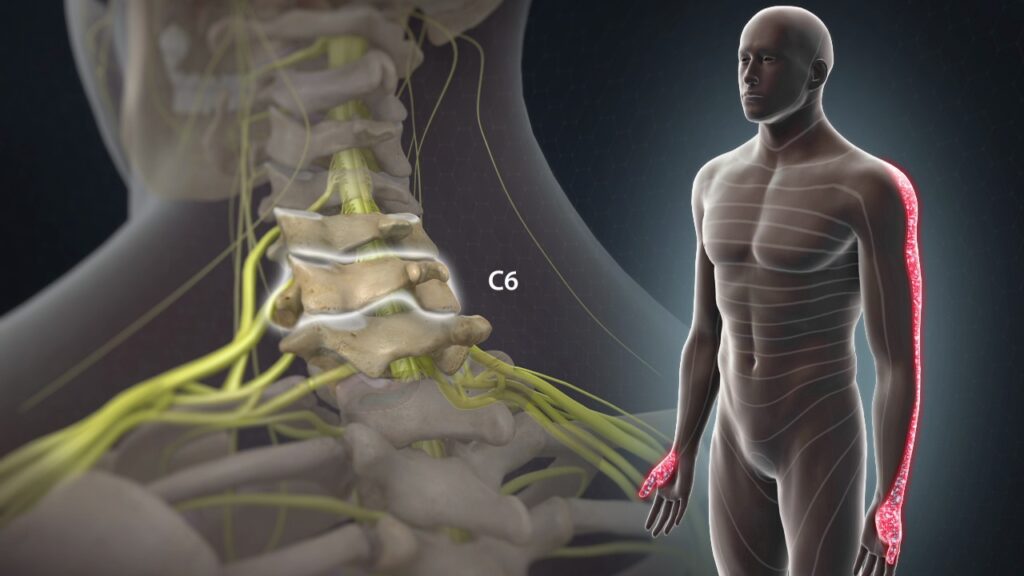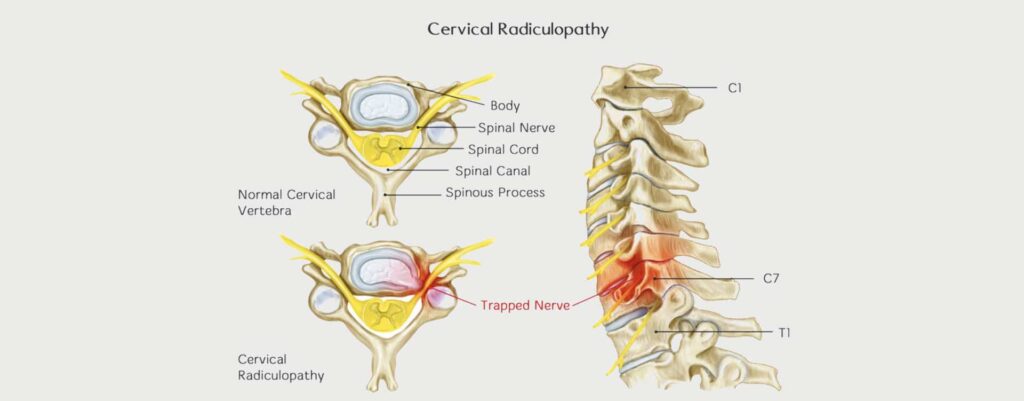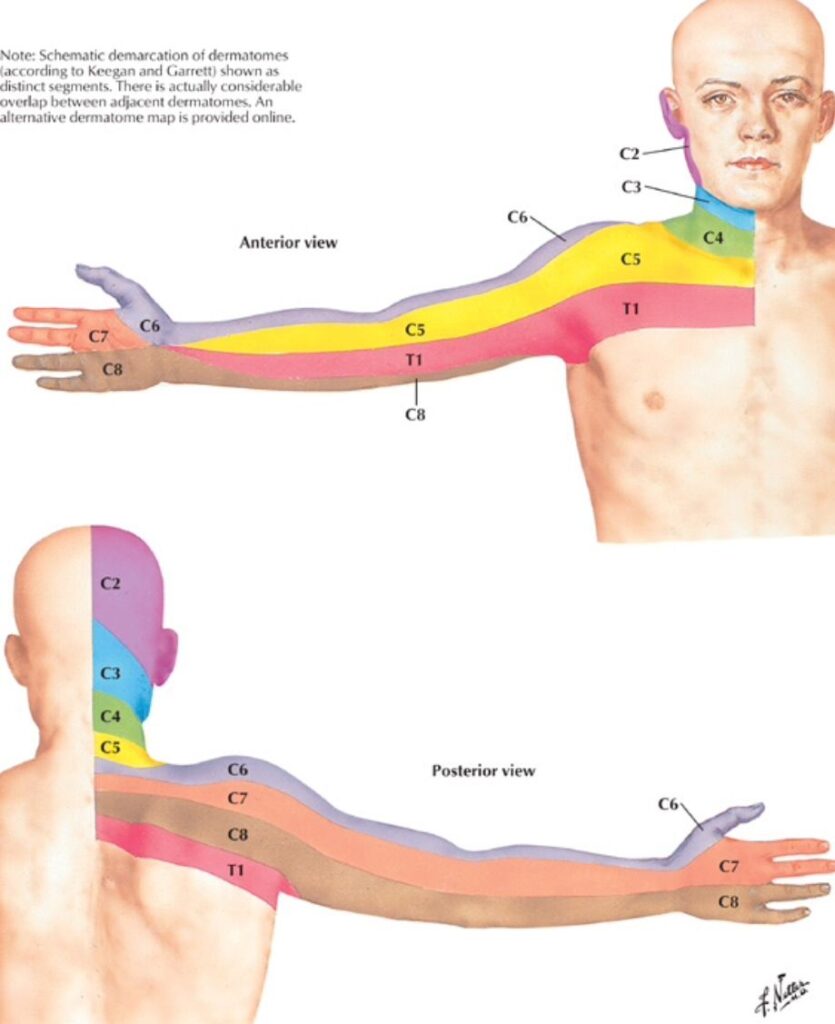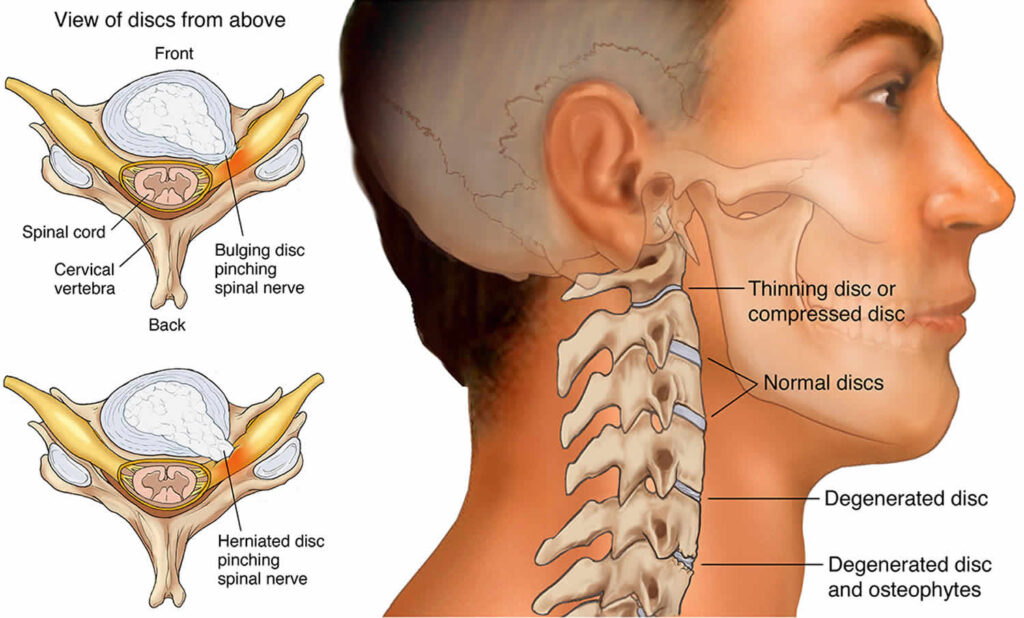Cervical Radiculopathy

If you are experiencing pain in your neck and arms, you may have cervical radiculopathy. This condition is caused by compression or irritation of the nerve roots in the cervical spine. In this comprehensive guide, we will discuss the causes, symptoms, and treatment options for cervical radiculopathy. We hope that this information will help you better understand your condition and make informed decisions about your care.

Cervical Radiculopathy: An Introduction
Cervical radiculopathy is a condition that results when the nerve roots in the neck are compressed or irritated. This can lead to pain, numbness, or weakness in the arms and hands. Cervical radiculopathy is also known as a herniated disc, pinched nerve, or slipped disc. Cervical radiculopathy is more common in people over the age of 50. However, it can occur at any age.
Women are more likely to develop cervical radiculopathy than men.

Causes of Cervical Radiculopathy
There are several ways that cervical radiculopathy can occur. A common cause is the wear and tear on the spine that occurs with age. This can lead to the development of bony spurs, which can compress and irritate the nerve roots. Other causes include herniated discs, foraminal stenosis degenerative disc disease, and spinal stenosis. In some cases, cervical radiculopathy can be caused by an injury to the spine.
Degenerative disc disease is a condition that occurs when the discs in the spine begin to break down. This can lead to the development of bony spurs, which can compress and irritate the nerve roots.
A herniated disc occurs when the outer layer of the disc ruptures. This can cause the inner layer of the disc to bulge out and compress the nerve root.
Spinal stenosis is a condition that occurs when the spinal canal narrows. This can compress the nerve roots and lead to pain, numbness, or weakness in the arms and legs.
Foraminal stenosis is a condition that occurs when the foramen (the opening where the nerve root exits the spine) becomes narrowed. This can compress the nerve root and lead to pain, numbness, or weakness in the arms and legs.
Symptoms of Cervical Radiculopathy
There are multiple symptoms that are associated with cervical radiculopathy. Out of all symptoms of radiculopathy, the most common one is neck pain. Pain from cervical radiculopathy can range from mild to severe and may worsen with certain activities such as bending or lying down. The pain may also radiate from the neck into the shoulder, arm, or hand. In some cases, people may also experience numbness, tingling, or weakness in the affected arm or hand. Muscle spasms may also occur.

Diagnosis of Cervical Radiculopathy
The diagnosis of cervical radiculopathy can be difficult, as the symptoms can mimic those of other conditions. Nonetheless, the condition can be diagnosed in the following ways:
Physical Examination
The first step in diagnosing cervical radiculopathy is to perform a physical examination. This will help to rule out other conditions that may cause similar symptoms. During the physical examination, the doctor will likely:
– Ask about your medical history and symptoms
– Perform a neurological examination
– Test your reflexes
– Check for muscle weakness
– Check for sensation changes
Imaging Studies
Imaging studies may also be used to diagnose cervical radiculopathy. These studies can help to rule out other conditions and confirm the presence of nerve compression. Imaging studies that may be used include:
– X-rays
– Magnetic resonance imaging (MRI)
– Computed tomography (CT) scan
– Myelogram
Electromyography and Nerve Conduction Velocity
Electromyography (EMG) and nerve conduction velocity (NCV) studies are sometimes used to diagnose radiculopathy. These tests measure the electrical activity of muscles and pinched nerves.
EMG can help to rule out other conditions that may cause similar symptoms. NCV can help to confirm the presence of nerve compression.

Treatment for Cervical Radiculopathy
Once cervical radiculopathy is diagnosed, treatment can begin. Treatment options include both conservative and surgical measures.
Conservative Treatment
Conservative treatment options for cervical radiculopathy include:
– Rest
– Ice or heat therapy
– Gentle exercises
– Massage
– Physical therapy
– Steroid injections
Surgical Treatment
If conservative measures fail to improve the symptoms of cervical radiculopathy, surgery may be recommended. Surgery for cervical radiculopathy can involve:
Discectomy:
This is a procedure to remove the herniated disc that is causing pressure on the involved nerve root.
Foraminotomy:
This is a procedure to enlarge the foramen (the opening where the nerve root exits the spine) to take pressure off of the nerve root.
Laminectomy:
This is a procedure to remove a portion of the lamina (the bony plate that covers the spinal cord) to take pressure off of the nerve root.
Spinal fusion:
This is a procedure to fuse two or more vertebrae together to stabilize the spine and take pressure off of the nerve root.
After surgery, you will likely need physical therapy to help you recover and regain strength. Surgery for cervical radiculopathy is generally successful in relieving pain and restoring function.
Frequently Asked Questions
There are several types of radiculopathy, each with different symptoms and causes. The most common type is cervical radiculopathy, which affects the neck and shoulders. Other types include lumbar radiculopathy (affecting the lower back and legs) and thoracic radiculopathy (affecting the chest and abdomen). Sciatica is a form of radiculopathy that specifically affects the sciatic nerve. Acute lumbar radiculopathy is the most common type of radiculopathy, accounting for about 70% of cases.
The primary symptom of radiculopathy is pain. This pain can range from mild to severe, and it is often worse when you try to move your affected limb or when you are in a particular position. You may also feel numbness, tingling, or weakness in the affected limb. These symptoms can vary depending on the type and severity of your radiculopathy. If you have severe radiculopathy, you may also experience problems with bowel or bladder control.
Radiculopathy is a condition that occurs when the nerve roots are compressed or damaged. This can lead to pain, numbness, and weakness in the affected area. Radiculopathy is most commonly caused by degenerative changes in the spine, such as those that occur with age-related wear and tear. It can also be caused by herniated cervical intervertebral discs, bone spurs, or other spinal abnormalities. While radiculopathy can be painful and debilitating, it is not usually a serious condition. In most cases, the pain will improve with rest, ice, and over-the-counter pain medication. If the pain does not improve or if it gets worse, you may need to see a doctor for further treatment.
There are several ways to treat radiculopathy, depending on the underlying cause. If the cause is a herniated disc or other spinal condition, treatment may include medications, physical therapy, and/or surgery. If the cause is something like arthritis, treatment may focus on pain relief and anti-inflammatory medications. In some cases, alternative therapies like acupuncture may also be helpful. Ultimately, the goal of treatment is to relieve pain and other symptoms so that you can live as normal a life as possible.
There are many potential triggers for radiculopathy, including:
-A herniated disc in the spine
-Spinal stenosis (narrowing of the spinal canal)
-Osteoarthritis of the spine
-Injury or trauma to the spine
-Degenerative disc disease
-Paget’s disease
-Infection or tumor in the spine
-Inflammatory conditions such as spondyloarthritis
-Metabolic disorders such as diabetes
-Vascular disorders such as arteriosclerosis
-Autoimmune conditions such as lupus or multiple sclerosis.
Radiculopathy can also be caused by compression of the affected nerve root from outside the spine, such as from a tumor or mass in the abdomen or pelvis. In some cases, the exact trigger for radiculopathy is unknown.
3 Ways to Level Up Your Rehab and Injury Prevention With Us





